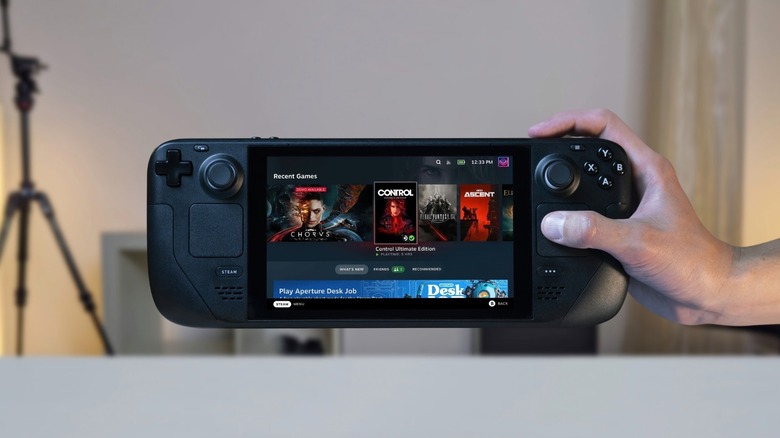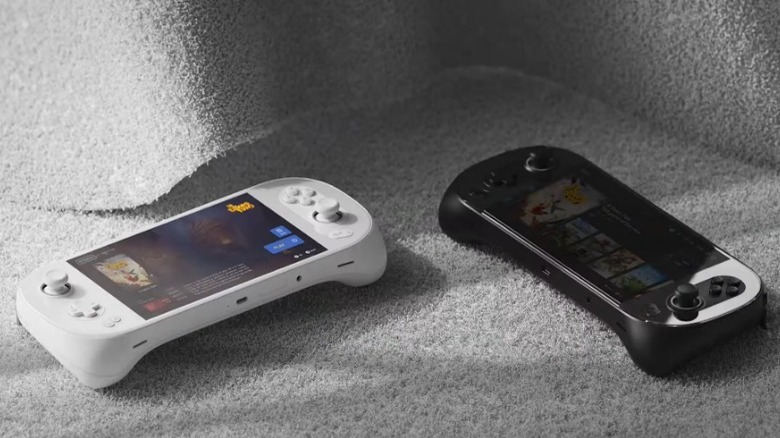Why Valve Doesn't Think Those AMD 6800U Handhelds Are Real Competition
It's safe to say that Valve's Steam Deck has been a rousing success, with the company boasting over a million sales according to a KDE Akademy keynote speaker, David Edmundson (via 80 Level). Steam Decks have also been topping the Steam sales charts numerous times in 2022. Sales numbers aside, the Steam Deck is a more-than-capable device, especially considering its $399 starting price. Featuring a custom, quad-core, AMD Zen 2 APU with eight RDNA 2 Compute Units, and 16 GB of LPDDR5 RAM, the Steam Deck is more than capable of running even some AAA games on its 400-nit, 7-inch, 1280x800 IPS display.
Since the announcement and launch of the Steam Deck, companies like AYANEO, Ayn, GPD, and One X Player have stepped up their game, releasing a variety of Windows-based handheld gaming devices equipped with AMD's latest Ryzen 7 6800U APUs. Some OEMs are even playing around with different form factors; like the GPD Win 4 that hides a full QWERTY keyboard under a sliding display, or the colossal ten-inch GPD Win Max 2 with its more traditional clamshell design and laptop keyboard. It certainly seems as though hardware manufacturers are working hard to compete with the Steam Deck and take advantage of the renewed interest in the handheld form factor, but is all of that actually necessary? A recent interview with the Steam Deck designers seems to suggest not.
Collaboration instead of competition
In The Verge's interview, Steam Deck designers Lawrence Yang and Pierre-Loup Griffais directly addressed rival handheld devices, noting that the Steam Deck's biggest advantage over other handhelds is its efficiency, thanks to the custom Aerith APU. While the off-the-shelf, eight-core AMD Ryzen 7 6800U is far more powerful than the custom unit in the Steam Deck — featuring four more CPU cores, eight more threads, and 50% more Compute Units in its Radeon 680M GPU — battery life and thermal limitations make the Steam Deck more competitive. All that extra power comes at a cost, with the Steam Deck topping out at 28W, while 6800U-powered devices can reportedly run at up to 40W (via ETA Prime on YouTube).
Aside from relying on efficiency to edge out the competition, the pair say they are excited for the development of the console market as a whole. Instead of competing with the other console OEMs on the market, they hope that SteamOS 3 — Steam's custom Linux-based operating system on the Deck — will power more gaming devices from other manufacturers. As both a hardware and software development company, this is a stance that makes sense for Valve, and aligns with previous comments from Gabe Newell about the low pricing of the Steam Deck. If more gaming devices are running SteamOS, more users will be spending on the Steam Store — the operating system's default source for games — meaning the company will generate revenue from both its own handhelds and its rivals.

